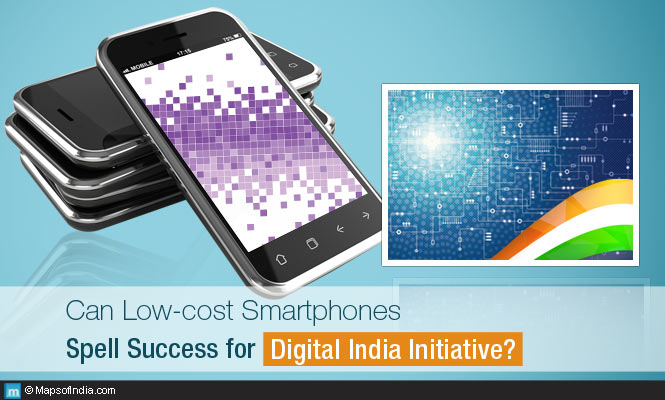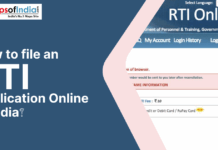 Datawind, the makers of much-hyped low- cost tablet ‘Akash’, recently launched ‘affordable’ smartphones PocketSurfer and once again the company’s expertise, technological innovations, and business model to capture vast Indian market will be put to test. The company claims boosting the vision for a Digital India as the phones are powered with free Internet access for connectivity. On manufacturing front, Datawind plans to support ‘Make in India’ campaign by making its 90 per cent products in India.
Datawind, the makers of much-hyped low- cost tablet ‘Akash’, recently launched ‘affordable’ smartphones PocketSurfer and once again the company’s expertise, technological innovations, and business model to capture vast Indian market will be put to test. The company claims boosting the vision for a Digital India as the phones are powered with free Internet access for connectivity. On manufacturing front, Datawind plans to support ‘Make in India’ campaign by making its 90 per cent products in India.
New Products: PocketSurfers
For domestic market, Datawind strives to redefine the meaning of affordability with the launch of a range of most affordable smartphones starting at just Rs 1,999. According to the industry estimates, nearly 1.3 crore feature phones are purchased in the country every month in the price range of Rs 1,000 to Rs 3,000. PocketSurfer smartphones allow consumers to upgrade and join the digital age at no extra cost over their current spends on a feature phone.
The PocketSurfer 2G4 is a 3.5 inch, Dual SIM, EDGE network compatible smartphone and the PocketSurfer 3G4 is a 4 inch, Dual SIM, 3G-compatible smartphone with Dual camera. For ‘Akash,’ the Linux-based tablets, the government had put strict specifications, which were not realistic, Suneet Singh Tuli, the President & CEO of Datawind argues. However, it is widely accepted that ‘Akash project failed to achieve its goal because of technological choices the manufacturers made. But this time, PocketSurfers are Datawind’s home-grown products based on Linux and Android operating systems.
These phones make use of Datawind’s breakthrough web acceleration technology to deliver the fastest internet browsing experience through the UbiSurfer browser. Besides competitive price, free access to unlimited internet access for a year also makes them a valuable proposition.
Free Internet
The PocketSurfer smartphones come bundled with free internet access, but the company aims at rural India, where connectivity is a major issue. Unless Datawind ties up with every service provider including Airtel, Vodafone and BSNL, its success in the hinterland would remain doubtful.
With 18 US and international patents, Datawind’s web delivery platform is expected to provide a faster and more affordable route to internet as compared to 2.5G and 3G networks. The users can expect fast and rich desktop-like web experience even on traditional GPRS/EDGE 2.5G mobile networks, thanks to Datawind’s back-end cloud servers that “accelerate the delivery of web content factors of 10x to 30x”.
It is to be noted that the free internet access does not include audio and video streaming, which can be availed by topping-up using market plans.
Make in India
Like any other foreign companies, Datwind seeks level-playing field in terms of duties like sales tax. The company claimed that 90 per cent of products used for making a PocketSurfer would be manufactured in India. However, it wants an attractive sales tax, which varies with every state in the country. Till Goods and Service Tax GST) is implemented, the state governments need to adopt uniform sales tax, so that companies like Datawind can set up its units and scale up. Essentially, a profitable business model exists for the company in India only if it scales up to meet the growing demand at ‘affordable’ price. The government plans to reverse the inverted duty structure related to Smartphones and Tablets, which would be a big boost for such companies to set up their units in India.
If Datawind keeps its pledge to manufacture over five million units per year in India, it is expected to generate 1,000 new direct and indirect jobs within the next year. Moreover, manufacturing devices locally have become a viable option, especially after the recent budget cut duty on electronic components to zero from 28 per cent and doubled the duty on finished goods.
Beginning of A New Phase
A Mobile revolution is in offing. Prime Minister Narendra Modi had said that there was immense potential for the IT sector to innovate and provide mobile applications to deliver citizen- centric services and mobile governance. E-governance, according to him, also implies “easy governance and economical governance”. Mobile telephony with latest technologies would take forward government’s Digital India initiative. Ultra low-cost smartphones would certainly revolutionise India’s movement towards achieving this ambitious objective.
If companies like Samsung, Micromax, Datawind and others can provide low-cost devices backed by the best available technologies, we can see this as a beginning of a new phase in internet revolution led by mobile internet. Companies will compete against each other in terms of internet delivery platform, low-cost hardware, quality software and overall price. Smartphones have only 35 per cent market share in the overall mobile market in the country and that shows the business potential in this segment.
Read More:
What’s So Special About Micromax Canvas Silver 5?
Microsoft Cortana: Digital Personal Assistant to Serve Android Devices
Quick Tips to Buy Budget Smartphones
Smartphones Will Be More Affordable in 2015
Lenovo smartphones now available in India
Xiaomi Market Penetration Threat to Samsung, Other Competitors
Are we too dependent on computers, technology and Internet?
Shall we give cell phones to school kids?





